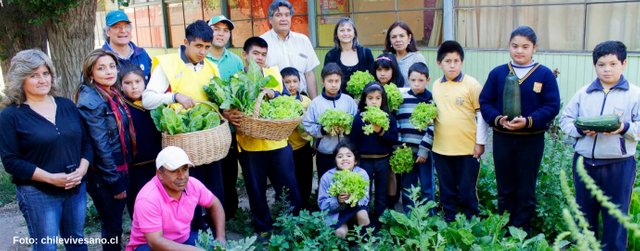Environmental education is one of the most important subjects that children need to learn, since it allows them to explore relationships with nature and the consequences that their actions can cause in an environmental sense.

Source
The school garden project meets these expectations, bringing students closer to reality, forcing children to create sustainable and environmentally friendly habits.
The school garden can be used as an object of interdisciplinary study. Students discuss topics such as food, nutrition and the environment, which, in combination with cultivation of soil and plants, create real and diverse learning situations, in addition to providing a living laboratory and the opportunity to work in a variety of themes. Therefore, teachers can hold children accountable by including them in discussions about project direction and plant care.

Source
- A math teacher will be able to use the cultivated food forms, linking the time of cultivation, flowering and fruiting with the development of the students.
- A language teacher can suggest essay topics related to the consumption of fruits and vegetables.
- A history teacher can see the origin of the names of fruits and vegetables, how they are consumed and used in traditional medicine.
- A geography teacher can work with fruits and vegetables typical of each region of the country, thus saving the culinary culture of each region.
In addition, within the framework of the school's school garden project, special attention is paid to the production and consumption of natural foods for students, which can be used in the kitchen or during school lunches, which will help them improve their health, promote exchange. of knowledge, the inclusion of topics such as home economics and the impact on the choice of baby food, as well as the practical presentation of the consequences of human actions on the environment.
School gardens can also be part of the community, involving parents and families of students in the project, remembering that children are multipliers, they bring what they study in the school house and, therefore, the influence of the garden and Food related is not limited to school.

Source
The school garden resulted in more conscious students who brought the environmental teachings to life, reinforcing the need to change the attitudes that must be carried out in society towards nature.
For the construction of the school garden, the teacher must have the participation of the students. The responsibility of each planted species can be divided into classes.
You must choose a suitable place. The selected place should receive direct sunlight during most of the day, especially in the morning, with little movement of animals or people, with the ability to water vegetables.
Once the site has been chosen, it is time to prepare the ground for planting. Remove weeds, rotate the soil to a depth of about 15 cm to make it smooth, and if necessary correct it with hydrated lime or sawdust with a gardener.
To fertilize the beds, you can use natural fertilizers, such as used coffee powder, fruit peel and pulp, manure, straw, and branches, which, when rotting, form an organic fertilizer.
It is also important to enlist the help of a gardener for proper handling and selection of seedlings or seeds, proper handling of soil and tools, and to ensure that planting is always healthy.
Reference:
https://www.agrohuerto.com/huertos-escolares/
https://hablemosdeculturas.com/tipos-de-huertos/
https://eligeeducar.cl/beneficios-y-oportunidades-crear-huertos-escolares-en-colegio
@tipu curate
Downvoting a post can decrease pending rewards and make it less visible. Common reasons:
Submit
Upvoted 👌 (Mana: 15/20 - need recharge?)
Downvoting a post can decrease pending rewards and make it less visible. Common reasons:
Submit